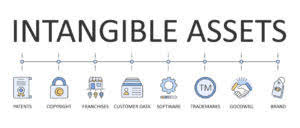
OK, so now let’s get back into the transposition mistake magic “9” identifier. If your discrepancy is evenly divisible by the number 9, you may have a transposition error on your hands. While creating the journal entry, you credit your Sales account $1,810.

common types of errors in accounting
- By carefully reviewing each entry for potential errors, discrepancies can be identified and rectified before they impact the overall financial health of the organization.
- For example, if the purchases account has a balance of $8,350 but has been wrongly posted in the trial balance as $8,630, this is known as a transposition error.
- Implementing robust internal controls and regular audits is a preventative approach to detect and mitigate balance sheet errors.
- A thorough examination of account balances and individual transactions can uncover errors.
- The repercussions extend to operational inefficiencies, as rectifying these errors demands valuable time and resources.
- For example, significant deviations from historical trends in liquidity ratios, profitability metrics, or asset turnover ratios can signal inaccuracies in the recorded figures.
- While creating the journal entry, you credit your Sales account $1,810.
That entry could be an https://x.com/bookstimeinc employee’s salary or a budgeting item used to make an important financial decision. Individuals should seek the advice of their own tax advisor for specific information regarding tax consequences of investments. Investments in securities entail risk and are not suitable for all investors. This site is not a recommendation nor an offer to sell (or solicitation of an offer to buy) securities in the United States or in any other jurisdiction.
- The balance sheet is fundamental for financial reporting, as it offers key insights into the company’s financial health, influencing decisions made by investors, creditors, and management.
- Entry reversal errors closely resemble principle errors; however, entry reversal is the result of entering transaction data in the wrong direction.
- If a bookkeeper mistakenly writes $24.74 instead of $24.47, the resulting $0.27 discrepancy would hardly be consequential.
- The text editor Emacs even has a basic control chord (Ctrl+T) to swap (transpose) the preceding two characters.
Our Team Will Connect You With a Vetted, Trusted Professional

In order to correct a transposition error, it is important to identify the source of the error and determine which digits were transposed. Then, the correct numbers must be entered and the incorrect calculations or reports must be updated. It is also recommended to review and verify the data multiple times to ensure the error has been corrected. Transposition Errors can significantly impact the accuracy and integrity of financial statements, leading to discrepancies that may influence financial planning and decision-making processes within an organization. Creating a workplace culture that prioritizes accuracy and attention to detail is fundamental in preventing balance sheet errors. Recognizing and rewarding accuracy and diligence in financial tasks can motivate what is one way to check for an error caused by transposed numbers? personnel to maintain high standards in their work.
How to Locate and Rectify Transposition Errors
A transposition error describes an event where a bookkeeper accidentally reverses two adjacent digits, when recording transactional data. Although this error may seem small in scale, it often results in substantial financial incongruities that can have a great impact in other areas. Transpositional errors, which tend to occur in accounting firms, brokerages, and other financial services providers, fall under the broader category of transcription errors. Implementing robust internal controls and regular audits is a preventative approach to detect and mitigate balance sheet errors. Internal controls, such as separation of duties, authorization requirements, and transaction limits, reduce the risk of errors and fraud. Periodic internal and external audits provide an additional layer of scrutiny, helping to identify and rectify errors in the balance sheet and other financial statements.
They also bring to the fore the need for efficient and honest internal accounting control and autonomous audit oversight. Notwithstanding these benefits, it drastically affects the financial world, like indenturing the trust in financial reporting, legal consequences, harm to brand image, and financial losses to firms. If a company fails to catch and correct transposition errors, the incorrect value of assets may be perpetuated to gross vs net outside agencies and individuals, such as corporate shareholders and the Internal Revenue Service. For example, a business may be saddled with an increased tax liability if the transposition error is large enough to slingshot that company into a higher tax bracket. If a bookkeeper mistakenly writes $24.74 instead of $24.47, the resulting $0.27 discrepancy would hardly be consequential. On the other hand, if $1,823,000 were accidentally recorded as $1,283,000, the resulting $540,000 error is sure to have a profound financial ripple effect.

Understanding Transpositional Errors

If the sum of all your credits and debits for a given account are the same (i.e. balance) then you’re good to go! If they don’t match, it’s time to start reviewing your entries to see if you’ve made one of the errors listed above. Mistakes happen, especially when it comes to recording transactions in your books. One type of accounting mistake that’s easy to make is a transposition error. Read on to learn what is transposition error and how it can affect your accounting books. In this example, my correcting journal entry flip-flops the accounts that are debited and credited.
The precision of the accounting system determines how many mistakes there are in a trial balance. The trial balance should be balanced, and the ledgers should include no mathematical mistakes if the accounting system is correct. This does not imply, however, that an organization’s accounting system is error-free. If the amount of debit balance is entered in credit balance or vice versa, it will show a difference of two times the amount of difference in the trial balance. Reversing accounting entries means that an entry is credited instead of being debited, or vice versa.
- For purposes of illustration, a partial trial balance is shown using account balances without the account titles.
- The seemingly minor act of reversing numbers or putting decimal points where commas belong go far beyond the page (or screen).
- That simple, easy-to-make transposition error alerts the IRS that your tax deposits don’t match wages paid.
- On each occasion the difference contains a 3 indicating that the wrong key might have been hit in error.
- You should perform reconciliations on a monthly and yearly basis, depending on the type of reconciliation.
This indicates a transposition error, the unbalanced trial balance should now be checked against account balances in the ledger to see whether the error can be identified. Remember, we have an external expectation of materiality as we saw in the introduction to this section, looking at Ernst & Young, LLP accounting firm’s opinion on the Alphabet, Inc. financial statements. For Alphabet, the numbers on the balance sheet are rounded to the nearest million. A $100,000 error may not be material if it won’t affect the reported numbers. Go to your books and perform the reconciliation process once more, making sure you check all account entries in the process.